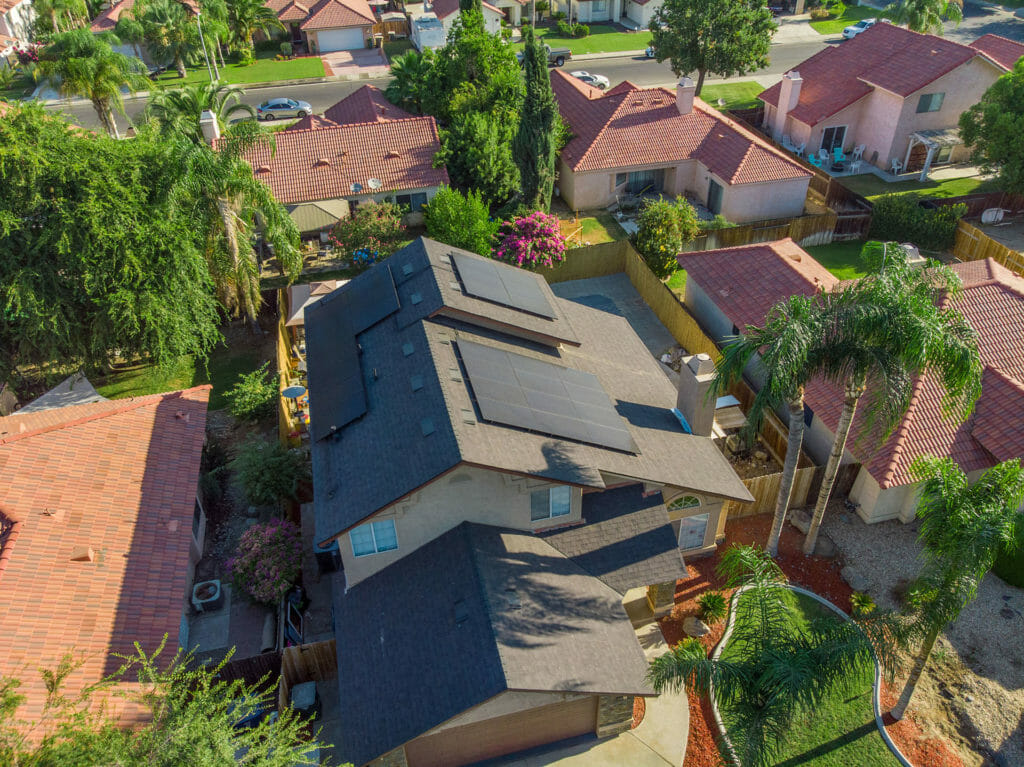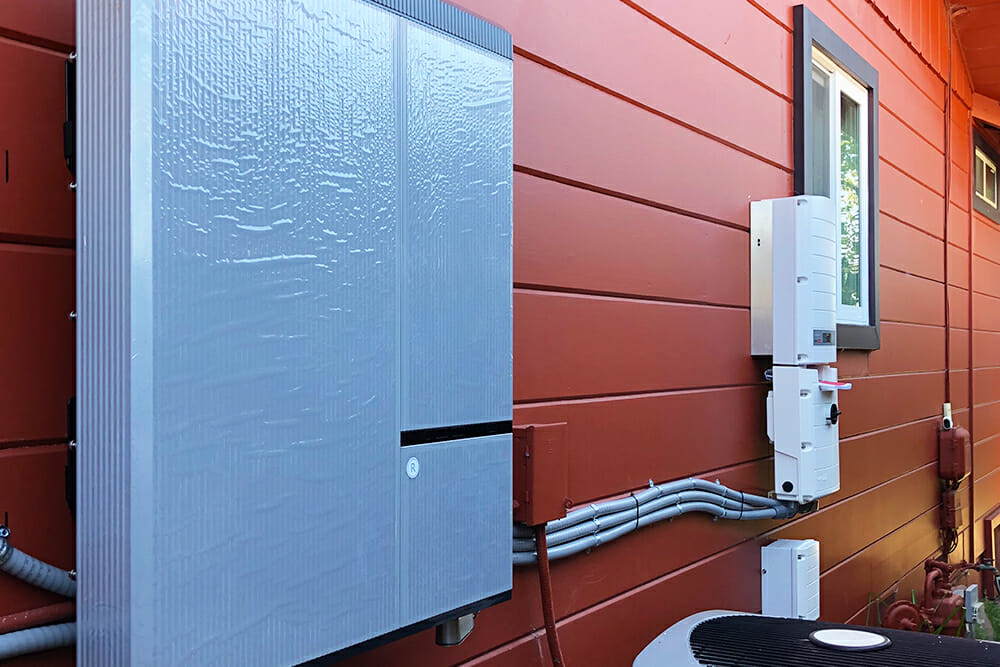Home battery systems are an increasingly popular choice for many homeowners in California, particularly as an add-on to solar power systems. Because PG&E and other large energy providers are shifting to time-of-use pricing, a model which charges customers a varying rate based on the energy they use at specific times of the day, customers are finding that home battery systems can reduce reliance on the power grid and decrease costs during peak-energy hours. Another reason that people are switching to home battery solutions is due to the severe blackouts imposed by PG&E—power restrictions in response to major wildfires caused by PG&E’s aging infrastructure. Going forward, these blackouts are expected to be a semi-regular occurrence during peak fire season, giving consumers another reason to adopt home battery systems in order to ensure their comfort during outages.
Whole-home battery storage systems are designed to power entire houses, but are extremely costly and somewhat impractical, while partial-load battery storage systems are affordable and practical.
The 2019 California power shut-offs left over 700,000 people without power, spelling trouble for those without a backup power source. Food insecurity and general discomfort became a serious problem as utility companies flipped the switch.
In the past, many homeowners used fuel-powered generators to power select parts of their homes during an outage. But now, as solar is more widely available, solar-powered home battery systems are rapidly becoming a more popular alternative to fuel-based backup generators. Solar-powered battery backup systems are more versatile energy sources, as they are able to store energy generated by solar panels, as well as from the grid during off-peak hours, for use during costly on-peak hours, or during blackouts or power outages.
There are two types of home battery systems: whole home and partial load. Whole-home battery systems are capable of storing enough energy to power an entire home, while partial-load systems are designed to power only critical, low-energy appliances, like microwaves and refrigerators. Whole-home battery systems might seem like the ideal energy storage solution, but, in practice, partial-load battery systems are a more functional, reliable source of energy during power outages.
Due to the amount of energy a typical household requires, whole-home battery systems are a short term solution for a potentially long term problem. When you lose power, a whole-home battery system can only power your home for a few hours. Consider a washing machine and dryer: combined, they can require more than 4.6 kwh to run. Add in air conditioning and/or heating, the refrigerator, dish washer, televisions, lights, computers, and whole-home batteries simply will not have the capacity to power a home for more than a few hours. Therefore, they are not very useful during an outage.
In fact, in order for a whole-home battery system to be feasible, a home has to be designed with energy efficiency in mind: small, extremely well insulated, solar-based water heating systems, passive heating and cooling solutions, energy-efficient appliances, and ovens and heating systems which use natural gas. For the vast majority of homeowners, a whole-home battery system would be incredibly costly, and wouldn’t be able to keep up with your home’s demands for more than a few hours at most.
On the other hand, partial-load systems are designed to power essential appliances over the course of several days or weeks. They are not meant to power the entire home, just what is necessary, like the refrigerator to keep food cold, and the microwave to warm food up. The idea is to disperse small amounts of electricity over the course of several days, instead of using a large amount of energy at one time. In most cases, a partial-load battery storage system is more practical than a whole-home system, allowing you to live more comfortably during increasingly common blackouts, or the occasional weather-related power outage.
Peak shaving and net metering are two ways that a battery storage system can lower your monthly electric bills.
As defined by PG&E, peak energy hours fall between the hours of 4 PM and 9 PM (either weekdays or every day, depending on the plan). Electricity prices are highest at these times because most people are at home and utilizing their appliances, which puts a strain on the power grid.
Homeowners can lower their monthly electric bills with a battery storage system, which captures electricity generated by a solar power system during daylight hours when you aren’t home. You can then use the battery to power your home during the 4 PM to 9 PM peak-energy window.
Energy can also be drawn from the grid during off-peak hours and stored in a home battery system for use during peak hours. This strategy is known as peak shaving, whereby homeowners reduce peak energy usage while still powering their home normally.
Another savvy approach to saving money with solar is through net metering. Net metering is a program that allows solar power system owners to receive a bill credit for excess power that their solar panels generate. With an ample size home solar system, you can potentially generate more electricity than your home requires and that your home battery can store. Through net metering, excess energy is transferred from your solar system to your utility company’s power grid. If, in the future, your solar system does not create enough energy to power your home, you can draw the energy that you “donated” back to your home from the power grid and use it just like you did prior to going solar. Since home energy needs often fluctuate, net metering is a great way to further reduce energy costs without facing a power outage down the road.
It’s important to note that net metering programs are not ubiquitous and policy varies by state. You can use the Database of State Incentives for Renewables and Efficiency (DSIRE) to learn if your state offers a net metering program. As of 2020, 39 states have mandatory net metering rules, including California and Nevada.
If you would like to learn more about how a home battery system can help you get the most out of your solar power system—or make a big difference in your life on its own—contact Ilum Solar today. We’ll be happy to answer all of your questions and help you identify the best way for your home or business to achieve greater energy independence.




